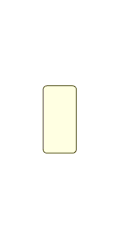"The Palace."
Near Palenque, Chiapas, Mexico.
Travel & Tour
Pictures, Photos, Information, Images, & Reviews.
George & Eve DeLange
Google Map To Palenque Archaeological Ruins
Near Palenque, Chiapas, Mexico.
View Larger Map
We Are Proud Of Our SafeSurf Rating!
Click On Any Of The Following Links By Amazon.Com
For Books Or Videos About Touring In Mexico. No Obligation!
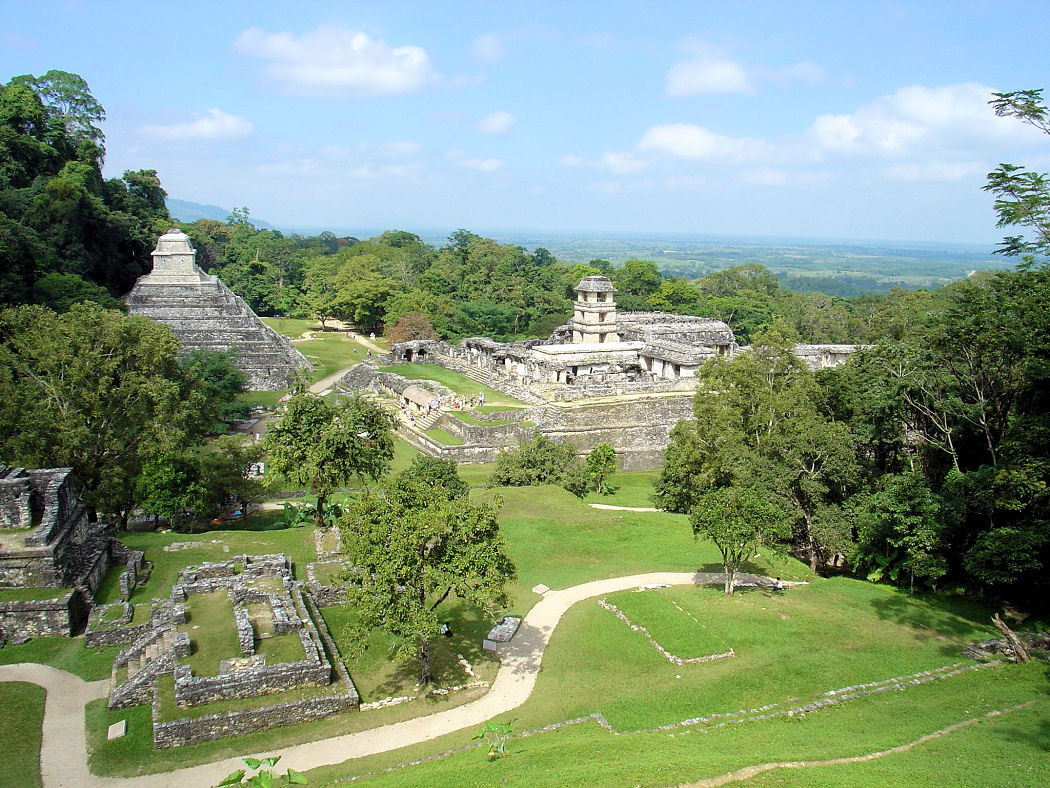
"Palenque Palace" As Seen From NW Corner Of The "Temple Of The Cross".
 |
| "Palenque Palace" As Seen From NW Corner Of The "Temple Of The Cross". |
|---|
 |
| "Palenque Palace" As Seen From NW Corner Of The Cross Group. |
|---|
Palenque's Palace:
After leaving The Cross Group we take the trail back, continuing North and then East across the Rio Otolum to Palenque's Palace which is one of the most interesting structures in all of Mesoamerica. The Palace is a complex of courtyards separated by long rooms and corridors which was a ritual and residential area for Palenque's rulers. Many of the rooms contained ornate benches, probably used as thrones. On the walls we see holes for pegs holding tapestries used to divide rooms and to cover doorways. Built upon a three-meter-high platform, the Palace was built in several stages from the early, now-subterranean structures to the unique Tower which was erected before the city's collapse. We have decided to walk around the Palace first before entering the Palace rooms. After completing our walk we arrive back at the SE corner of the Palace. Our first twelve photos on this page are taken during the walk. We first look at the Palace from the SE corner as we start our second walk along the East side. We notice a roof halfway up to the right side (East NE) which covers stucco reliefs on the face of a tier. if we look to the North a little further we see a long building called House A. Above the roof we see that five piers are decorated with reliefs. The reliefs probably are of Palenque rulers surrounded by their parents or ancestors. These piers act as doors to "House A" located on the North East corner of the Palace. As we go through the doorway we enter a long room that opens on the West side onto the East Court Yard, which is the largest open space of the Palace. Straight West across from this patio stands House C. House B is on the South end of the Court Yard and House A-D is on the North end. House A-D is mostly destroyed on the East Court Yard. It collapsed many years ago due to a weakness in the substructure of the Palace. Short staircases descend on each of the four sides of the East Court Yard which is a sunken courtyard. After passing through House A, if we look back toward House A we see on either side of the House a staircase are a series of reliefs dubbed the Nine Grotesques. Because of their mismatched borders and awkward framing, researchers think these panels were carved for another site, moved here, and then cut to fit. Because of injuries to the people shown on the panels, archaeologists theorize that this is a procession of humiliated enemy rulers. Looking West across the court at "Building C" there are two panels, one on each side of the staircase. There are also six smaller ones depicting rulers in poses of submission that are set into the wall on either side. Between the six, there are six square panels with carved inscriptions that probably identify the defeated rulers. On the north side of the courtyard, there are the remains of "House A-D" which originally held the Palace Tablet, the most elaborate relief ever found at Palenque, now located in the site museum. "House C" is on the west side of the courtyard. The wall of its east corridor is perforated with T -shaped windows called Ik openings. To the mayan the T - shape represented the wind so it is thought that the windows were shaped that way to allow a breeze through the building. We take a doorway which opens onto the "West Courtyard." From here we see "House D" on the northwest corner of the Palace. It is made up of two long rooms divided by a wall (perforated by Ik openings) with colonnades on the east and west sides. As we return to the "West Courtyard" it is easy to notice the four-story Tower on the north side. The purpose of the Tower is unknown. It may have been used as an observatory or as a watchtower. Some think the Tower acted as sundial. A small courtyard is on the south side of the Tower. There are holes in the floor which were Mayan toilets. South of the tower are located "Houses F, G, H, and I". On the east side of the Towers court we see "House E". The room inside has a copy of the "Oval Palace Tablet", with the date 652A.D. The tablett shows Pakal seated on a double-headed jaguar throne facing his mother, Lady Sak K'uk', holding a headdress. It shows the date in which Pakal ascended to Palenque's throne. Below this relief there used to be a carved throne. The walls of "House E" have rows of painted flowers on them. A nearby stairway descends into the rooms of the "House E" basement. We enter the "House E" stairway and at the bottom we find underground rooms built on an east-west axis. There we take the passages to the South end of the Palace and a series of rooms. We then exit into the daylight on the middle of the southern staircase. Here George found a good place to take a break on a stone bench. From here we walked to the North Group and to the Temple Of The Count before moving on to the Museum.
|
Getting to Palenque can be somewhat of a challenge since no major airlines travel to Palenque. Here are our suggestions:
By air:
By land:
You have to take highway 190 coming from Tuxtla Gutierrez, which goes across Chiapas in a west to southeast direction going past San Crist�bal de las Casas, and then on highway 199 leading to Ocosingo and Palenque. The trip takes approximately 5 hours. If your drive begins at Villahermosa, you take highway 186 up to the City of Esc�rcega; from there you take highway 114 to the Municipality of Palenque, where there is a bifurcation towards the archaeological compound. The trip takes a little over two hours.
By train:
Also, you could take the "Mayan Express", a luxurious tourist service connecting M�rida and Palenque. The "Mayan Express" train has a coffee car, dinning car and club car. It also has a library specialised on pre-Hispanic cultures. We have always driven there from either Tuxtla Gutierrez or Villahermosa. We would fly to one of those cities and then rent a car to drive to Palenque. There are "guides" at the Gate into Palenque, if you wish to hire a "guide." Note: There are several nice hotels in the nearby city of Palenque. There is no reason why you could not visit the Palenque ruins over a two or three day time period. That way, you could "see it all"! We have links to Priceline on this page so you can find airlines and hotels that serve those areas.
|
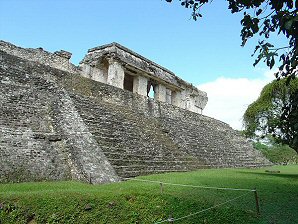 | 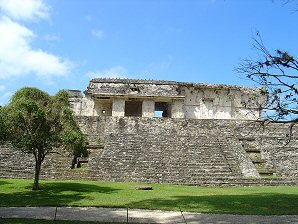 |
| Palenque Palace, Center East Side. | Palenque Palace, Center East Side. |
|---|---|
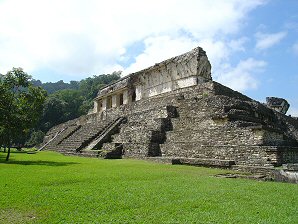 | 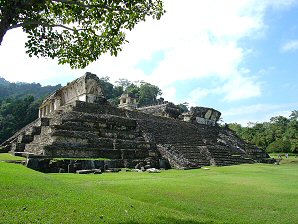 |
| Palenque Palace, East North East Corner. | Palenque Palace, North Side. |
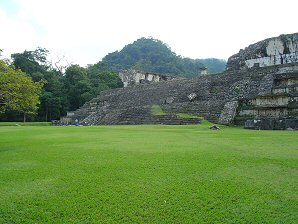 | 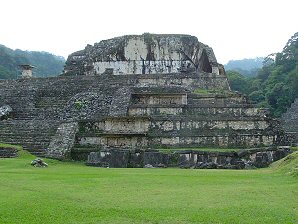 |
| Palenque Palace, North Side Looking SE. | Palenque Palace NNW Corner. |
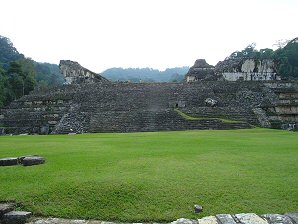 | 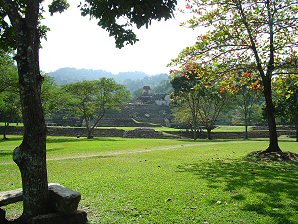 |
| Palenque Palace, North Side. | Palenque Palace, North Side. |
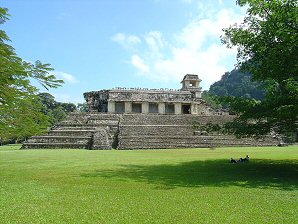 | 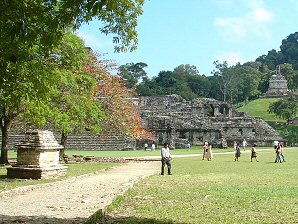 |
| Palenque Palace, West Side. | Palenque Palace WSW Corner. Grave Of Alberto Ruz Lhuillier. In Foreground. |
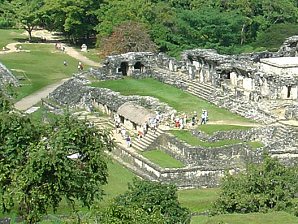 | 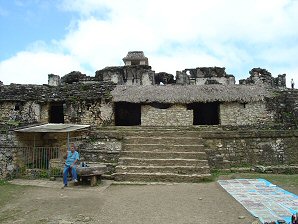 |
| Palenque Palace South Side. | George DeLange At Palenque Palace South Central Side. |
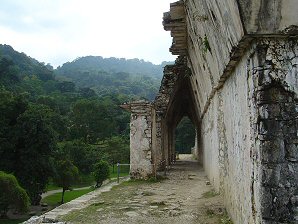 | 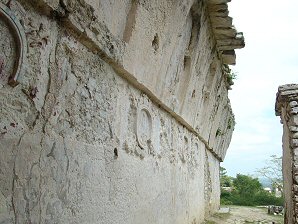 |
| On Top Platform. East Side House A Looking South. | On Top Platform. East Side Of House A Looking North. |
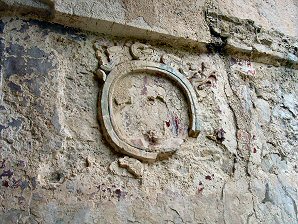 | 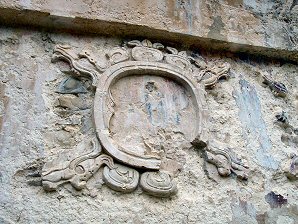 |
| Stucco Reliefs On "House A". Outside East Wall. | Stucco Reliefs On "House A". Outside East Wall. |
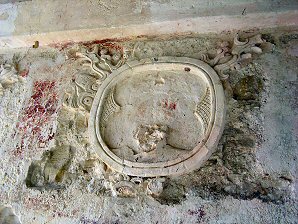 | 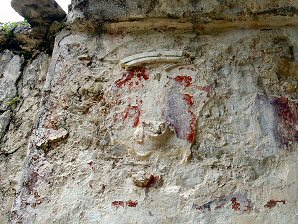 |
| Stucco Reliefs On "House A". Outside East Wall. | Stucco Reliefs On "House A" Outside East Wall. |
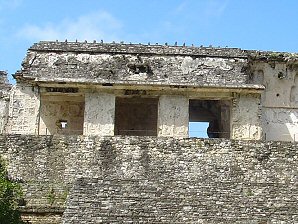 | 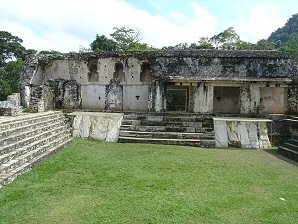 |
| This Is The East Face Of "House A" Of "The Palace". | After Passing Through "House A" This Is The View looking SE From Inside The "East Court". |
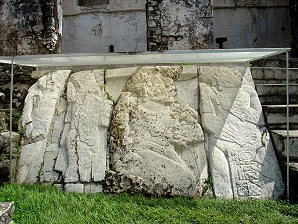 | 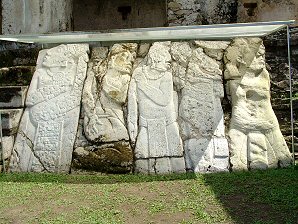 |
| House A, Looking East At The 4 Panels Left Of Stairway. Panels Called The "Nine Grotesques". | House A, Looking East At The 5 Panels Right Of Stairway. Panels Called: The "Nine Grotesques". |
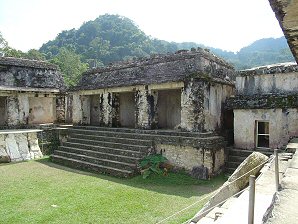 | 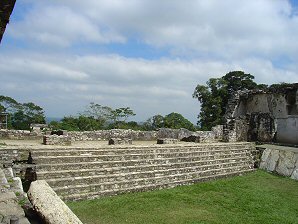 |
| The View looking SE From Inside The "East Court" North Side Of "House B" In Back. | The North Steps Looking North From Inside The "East Court" Reminants Of "House A-D" On Top. |
 | 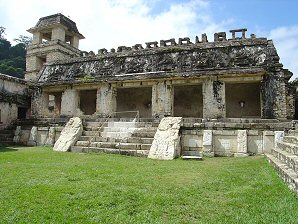 |
| This Is "House C" Looking West From Inside The "East Court". | This Is "House C" Looking WSW. From Inside The "East Court". |
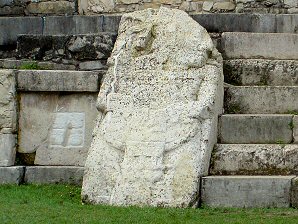 | 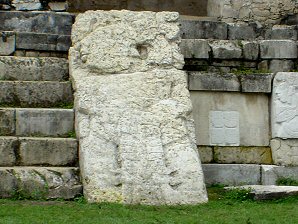 |
| "House C", Left Staircase Panel. | "House C", Right Staircase Panel. |
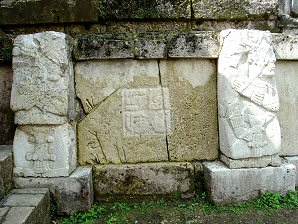 | 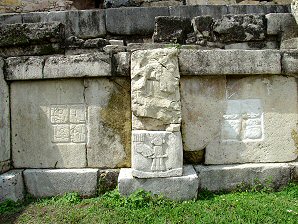 |
| "House C", Left Wall Panels. | "House C", Left Wall Panels. |
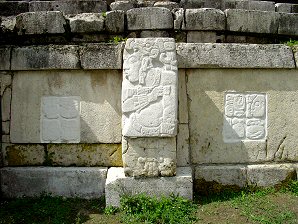 | 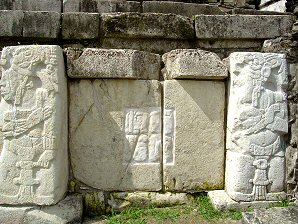 |
| "House C", Right Wall Panels. | "House C", Right Wall Panels. |
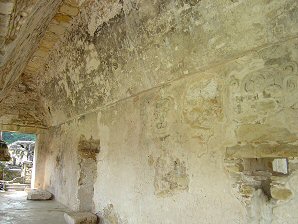 | 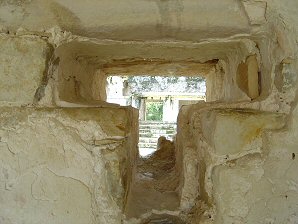 |
| Inside Wall Of "House C". | T - Shaped Window Of "House C". These Are Called: "Ik" Windows. "Ik" Means Sacred Wind. |
 |  |
| Another T - Shaped "Ik" Window. These Windows Go Through Both Walls. | Looking West Through House C. Across West Court At House D. |
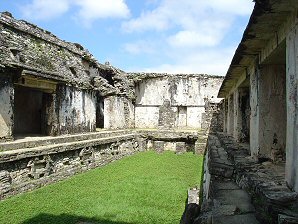 | 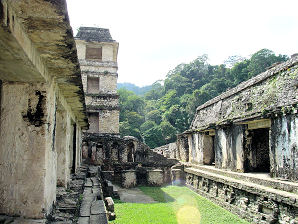 |
| West Court, Looking North. West Part Of "House A" In Back. | West Court, Looking South. NW Part Of "Tower" In Back. |
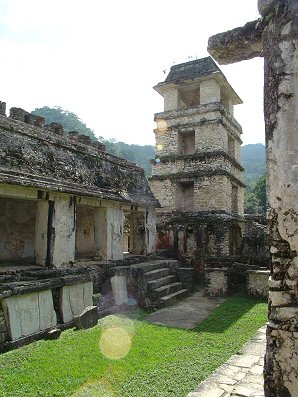 |  |
| West Court, Looking South. North Side Of "Tower". | West Court, Looking South. North Side Of "Tower". |
 |  |
| SE Corner Top Of Palace "House E" In Back Right. | SE Corner Top Of Palace. "House E In Back Right. |
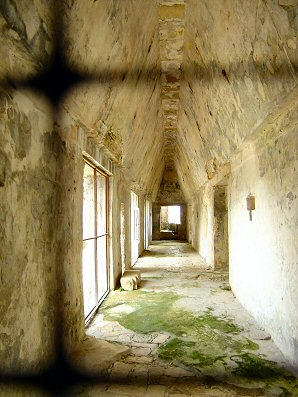 |  |
| One Room Of "House E". | Oval Tablet Copy, Shows Pakal And His Mother. |
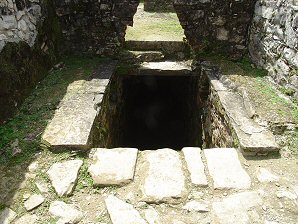 | 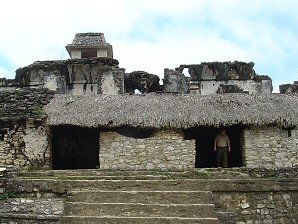 |
| "House E" Tunnel Entrance Leads Down To Underground Rooms. | The Underground Rooms Exit Here. |
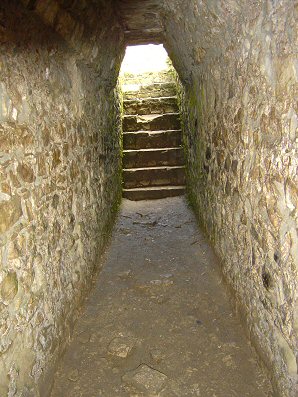 | 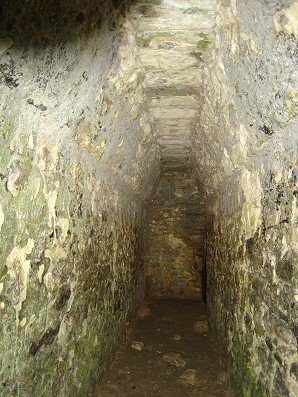 |
| We Descend Down This Stairs. | And Walked To This T Tunnel. |
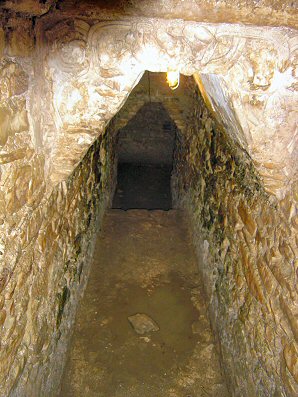 |  |
| Underground Passageway. | Underground Passageway Bench. |
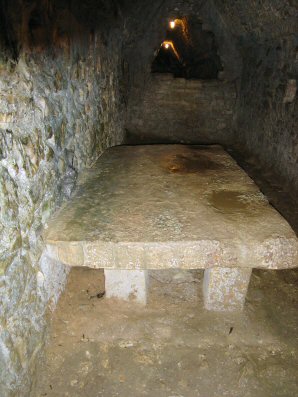 | 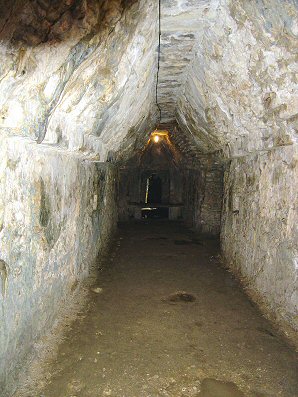 |
| Underground Passageway Bench. | Underground Passageway. |
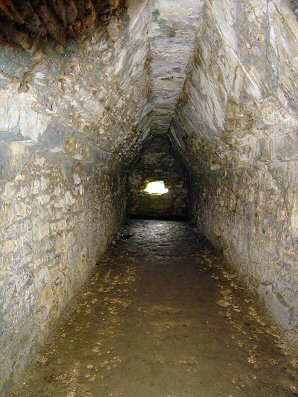 | 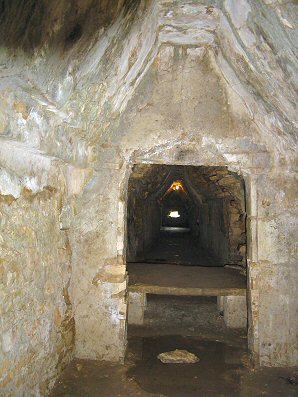 |
| Underground Passageway. | Underground Passageway Bench. |
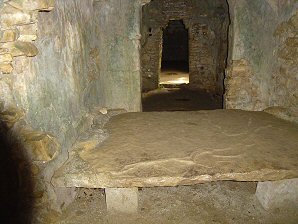 | 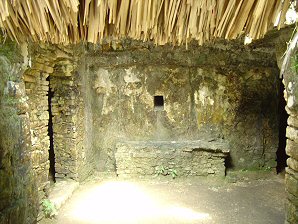 |
| Underground Passageway Bench. | Underground Passageway Exit. |
 | 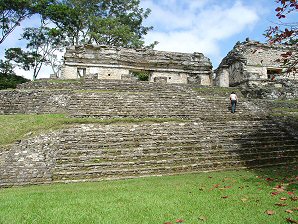 |
| Walking On North Of The Palace To The Temple Of The Count. | L To R, Temple 2 And 3 Of "The North Group". |
 | 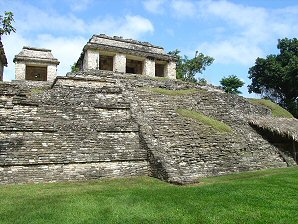 |
| Middle L To R, Temple 3 And 4 Of "The North Group". | L To R, Temple 4 And 5 Of "The North Group". |
We Are Proud Of Our SafeSurf Rating!
Click On Any Of The Following Links By Amazon.Com
For Books Or Videos About Touring In Mexico. No Obligation!
Click Here On Links To Great Mexico Hotels.
Click Here On Links To Great Mexico Hotels.
Other Palenque Archaeological Site Pages!
|
|
|---|
| Palenque Archaeological Site Page One
|
| Palenque Archaeological Site Page Two
|
| Click Here To Enter Lord Pakal's Tomb
|
| Palenque Museum Page
|
| Back To Mexico Trips Main Page
|
| Back To DeLange Home Page |


